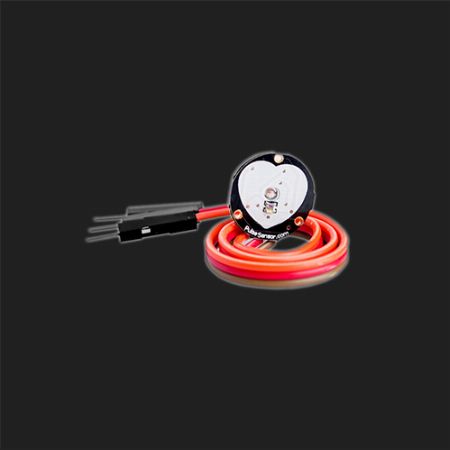1. Please provide your name
2. Please provide your number
3. Please provide your inquiry
Start Chatting in 3 easy steps
No registration required.
No registration required.
365572 ads
We are one of the largest free online selling communities with thousands of active sellers.
297111883 views
Do you have something to sell? Your next sale might be just a few clicks away.
4.7 stars
Based from 898 member feedbacks. We value your suggestions and use it.


Heartbeat sensor is used to detect heartbeats. It can be wore on the finger or earlobe and connected to Arduino via cables.
Compatible with Arduino
Operating Voltage: 5V
Current Consumption: 4mA
Heartbeat sensor is used to detect heartbeats. It can be wore on the finger or earlobe and connected to Arduino via cables. It also carries an open source program to display heart rate via diagrams in real time. It is an optical heart rate sensor integrated with amplifying circuit and noise cancellation circuit.
The principle behind the working of the Heartbeat Sensor is Photoplethysmograph. According to this principle, the changes in the volume of blood in an organ is measured by the changes in the intensity of the light passing through that organ.
The source of light in a heartbeat sensor is an IR LED and the detector is a Photo Detector. With these two i.e. a light source and a detector, we can arrange them in two ways: A Transmissive Sensor and a Reflective Sensor.
In a Transmissive Sensor, the light source and the detector are place facing each other and the finger of the person must be placed in between the transmitter and receiver.
Reflective Sensor, on the other hand, has the light source and the detector adjacent to each other and the finger of the person must be placed in front of the sensor.
The pulse sensor has three pins which are as described below:
GND: Ground Pin
VCC: 5V or 3V Pin
A0: ****og Pin
There is also a LED in the center of this sensor module which helps in detecting the heartbeat. Below the LED, there is a noise elimination circuitry which is supposed to keep away the noise from affecting the readings.
Working – Pulse Sensor
When a heartbeat occurs blood is pumped through the human body and gets squeezed into the capillary tissues. The volume of these capillary tissues increases as a result of the heartbeat. But in between the heartbeats (the time between two consecutive heartbeats,) this volume inside capillary tissues decreases. This change in volume between the heartbeats affects the amount of light that will transmit through these tissues. This change is very small but we can measure it with the help of Arduino.
The pulse sensor module has a light which helps in measuring the pulse rate. When we place the finger on the pulse sensor, the light reflected will change based on the volume of blood inside the capillary blood vessels. During a heartbeat, the volume inside the capillary blood vessels will be high. This affects the reflection of light and the light reflected at the time of a heartbeat will be less compared to that of the time during which there is no heartbeat (during the period of time when there is no heartbeat or the time period in between heartbeats, the volume inside the capillary vessels will be lesser. This will lead higher reflection of light). This variation in light transmission and reflection can be obtained as a pulse from the ouptput of pulse sensor. This pulse can be then conditioned to measure heartbeat and then programmed accordingly to read as heartbeat count.
Connect the pulse sensor with Arduino as follows
GND pin of pulses sensor to GND of Arduino
VCC of pulse sensor to 5V of Arduino
A0 of pulse sensor to A0 of Arduino
After that, connect the LED to pin 13 and GND of Arduino as shown in the figure below. The LED will blink according to the heart beat.
http://www.circuitstoday.com/pulse-sensor-arduino
This seller has been a member since: Nov. 24, 2015
Member Location:
Total Classifieds: 1021
Why seller feedback is important?
Transact with most credible & reputable sellers
Know the seller you are going to deal with
Claim warranty long after purchasing the item
Warn you and other buyers against scams
Motivates sellers to provide good service